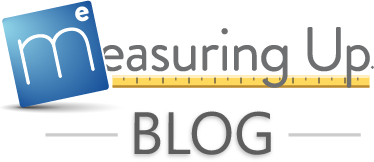 While there are many assessment techniques available to educators, how do we know we are employing the ones that will make the most instructional difference? Certainly, the data source and how it can be used to support student achievement is paramount. Best practices recommend that educators use a combination of formal and informal measures to construct an accurate picture of student achievement1.
While there are many assessment techniques available to educators, how do we know we are employing the ones that will make the most instructional difference? Certainly, the data source and how it can be used to support student achievement is paramount. Best practices recommend that educators use a combination of formal and informal measures to construct an accurate picture of student achievement1.
Formal Measures
Both formal and informal measures provide direct evidence of student learning — what students actually do. Formal assessments are those that are systematically measured and tend to be summative in nature. Standardized tests are one example of a formal measure. Rubrics used to score written assignments and presentations are another. Formal measures also come in the form of district- and teacher-created tests. Many successful districts consistently benchmark student progress towards standards mastery using locally-developed tests. Moreover, teacher-created tests such as pre- and post-unit assessments are considered summative when they assess standards mastery.
Educators at Loyola Marymount University2 have identified 6 qualities of a good assessment.
- Reliable — provides consistent results
- Valid — measures the intended learning outcomes
- Actionable — identifies challenges and how to address them
- Feasible and Manageable — is efficient and cost effective
- Interesting and Meaningful — provides results that educators care about and are willing to act on them
- Converging — provides multiple indications of evidence point to same conclusion
Whether you are building a district-based assessment or a test for your own students, using a CBM will make the task more manageable. Quality systems include a wealth of standards-based questions to draw upon, allowing standards to be assessed at a variety of cognitive levels. Automatically generated reports provide actionable data on how well students have mastered standards. While tracking progress over time presents a clear picture of what students can do.
Informal Measures
Informal measures contribute to the overall picture of student achievement by confirming student learning. McDonald (2018) contends that teachers are always assessing; that they are continually seeking proof that their students are learning. Beyond quizzes and assignments, they observe and probe for evidence of understanding. Analyzing this data rich information, teachers are able to adjust instruction, group and regroup students and provide targeted lessons and assignments.
Additional examples of informal assessment include self-assessments such as survey responses of feelings, attitudes or perceptions. Attitude and interest surveys and “How I am doing?” checklists provide teachers with a window into potential challenges.
Conclusion
Successful districts and schools establish a system evaluation of student learning with both formal and informal measures. When constructing a comprehensive assessment plan consider a balance of summative assessments that document learning with data rich formative measures that inform instruction.
Measuring Up is a state-customized blended solution that offers standards-based print instruction as well as a digital component that delivers diagnostic/formative assessment and adaptive practice. Measuring Up is a proven supplemental resource that targets instruction and allows for a variety ways for a classroom teacher to measure for understanding and learning.
To learn more about Measuring Up and how it helps students build standards mastery, visit us at masteryeducation.com today!
References
1 Selecting an assessment measure. Retrieved on 7/7/2018 from www.lmu.edu
2 Assessment Methods: A look at formal and informal techniques. Retrieved on 7/18/18 from https://teachereducation.steinhardt.nyu.edu
